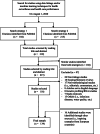Methodological guidelines to estimate population-based health indicators using linked data and/or machine learning techniques
- PMID: 34983651
- PMCID: PMC8725299
- DOI: 10.1186/s13690-021-00770-6
Methodological guidelines to estimate population-based health indicators using linked data and/or machine learning techniques
Erratum in
-
Correction to: Methodological guidelines to estimate population-based health indicators using linked data and/or machine learning techniques.Arch Public Health. 2022 Feb 23;80(1):67. doi: 10.1186/s13690-022-00831-4. Arch Public Health. 2022. PMID: 35193664 Free PMC article. No abstract available.
Abstract
Background: The capacity to use data linkage and artificial intelligence to estimate and predict health indicators varies across European countries. However, the estimation of health indicators from linked administrative data is challenging due to several reasons such as variability in data sources and data collection methods resulting in reduced interoperability at various levels and timeliness, availability of a large number of variables, lack of skills and capacity to link and analyze big data. The main objective of this study is to develop the methodological guidelines calculating population-based health indicators to guide European countries using linked data and/or machine learning (ML) techniques with new methods.
Method: We have performed the following step-wise approach systematically to develop the methodological guidelines: i. Scientific literature review, ii. Identification of inspiring examples from European countries, and iii. Developing the checklist of guidelines contents.
Results: We have developed the methodological guidelines, which provide a systematic approach for studies using linked data and/or ML-techniques to produce population-based health indicators. These guidelines include a detailed checklist of the following items: rationale and objective of the study (i.e., research question), study design, linked data sources, study population/sample size, study outcomes, data preparation, data analysis (i.e., statistical techniques, sensitivity analysis and potential issues during data analysis) and study limitations.
Conclusions: This is the first study to develop the methodological guidelines for studies focused on population health using linked data and/or machine learning techniques. These guidelines would support researchers to adopt and develop a systematic approach for high-quality research methods. There is a need for high-quality research methodologies using more linked data and ML-techniques to develop a structured cross-disciplinary approach for improving the population health information and thereby the population health.
Keywords: Artificial intelligence; Data linkage; Guidelines; Health indicators; Linked data; Machine learning techniques; Methodological guidelines; Population health research; Statistical techniques.
© 2021. The Author(s).
Conflict of interest statement
R. Haneef is the first author of this paper and the section editor of “health information system” of “Archives of Public Health”. All other authors declare that they have no competing interests related to the work.
Figures

References
-
- Lloyd K, McGregor J, John A, Craddock N, Walters JT, Linden D, Jones I, Bentall R, Lyons RA, Ford DV, Owen MJ. A national population-based e-cohort of people with psychosis (PsyCymru) linking prospectively ascertained phenotypically rich and genetic data to routinely collected records: overview, recruitment and linkage. Schizophr Res. 2015;166(1):131–136. doi: 10.1016/j.schres.2015.05.036. - DOI - PubMed
-
- Delnord M, Szamotulska K, Hindori-Mohangoo AD, Blondel B, Macfarlane AJ, Dattani N, Barona C, Berrut S, Zile I, Wood R, Sakkeus L, Gissler M, Zeitlin J, and the Euro-Peristat Scientific Committee Linking databases on perinatal health: a review of the literature and current practices in Europe. Eur J Pub Health. 2016;26(3):422–430. doi: 10.1093/eurpub/ckv231. - DOI - PMC - PubMed
-
- Haneef R, Delnord M, Vernay M, Bauchet E, Gaidelyte R, Van Oyen H, Or Z, Pérez-Gómez B, Palmieri L, Achterberg P, et al. Innovative use of data sources: a cross-sectional study of data linkage and artificial intelligence practices across European countries. Arc Public Health. 2020;78(1):55. doi: 10.1186/s13690-020-00436-9. - DOI - PMC - PubMed
-
- Joint Action on Health Information: https://www.inf-act.eu/. 2018.
Grants and funding
LinkOut - more resources
Full Text Sources

